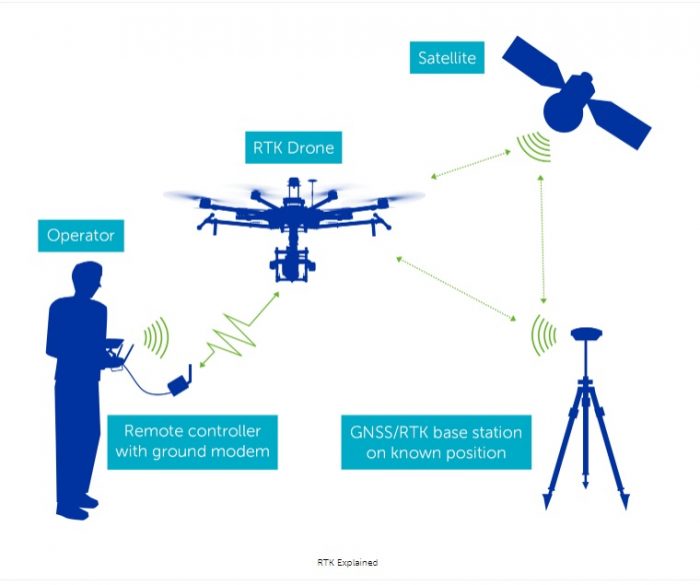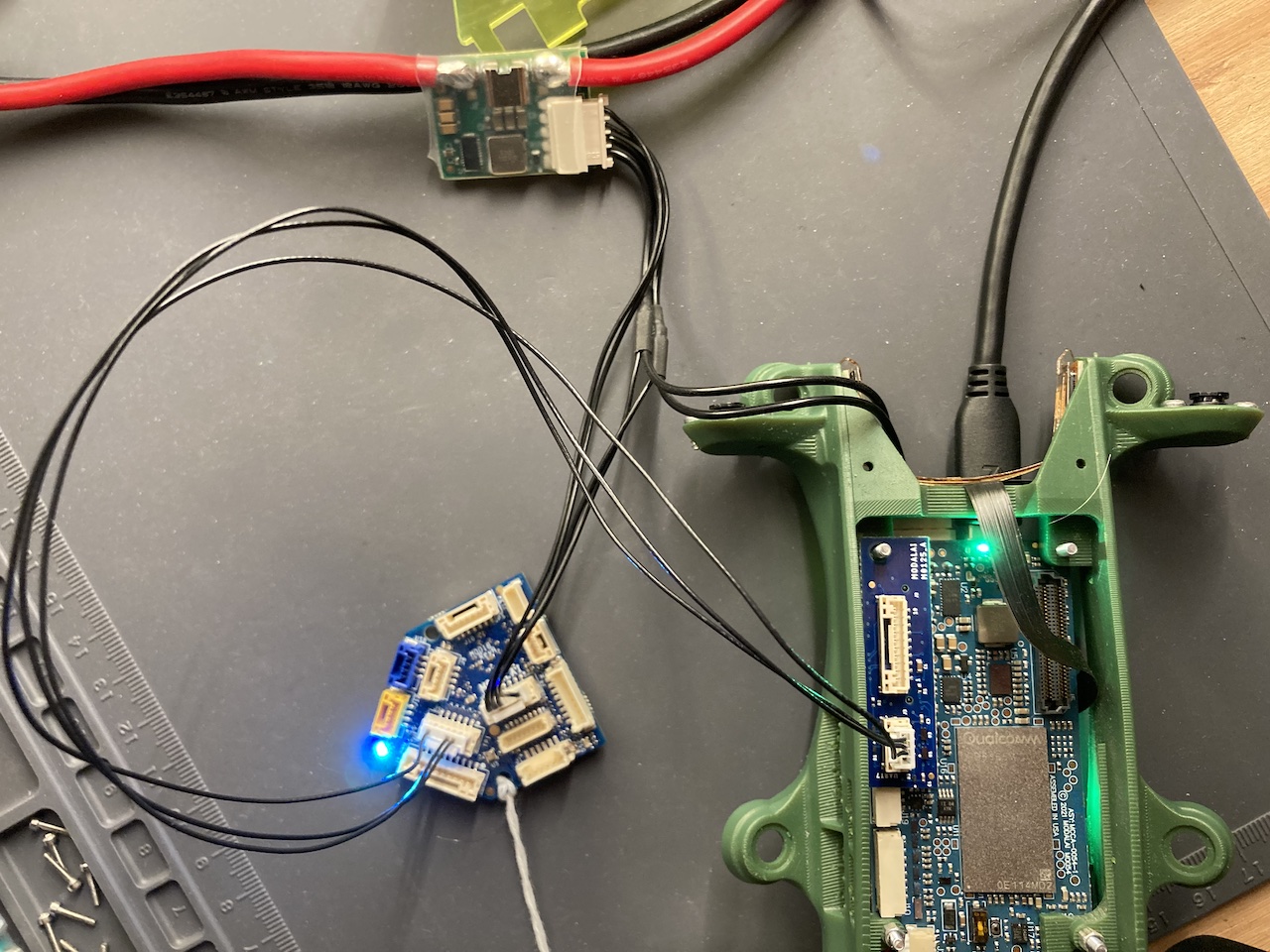Understanding the Vital Attributes and Functions of a Drone Flight Controller for Ideal Airborne Performance
The flight controller serves as the pivotal part in a drone's architecture, coordinating its motions and making certain security through a sophisticated interplay of sensing units and information handling. With advancements in technology, the landscape of trip controllers is rapidly evolving, triggering a better evaluation of what truly specifies optimal performance in this essential system.
Introduction of Flight Controllers
When checking out the globe of drone technology, comprehending flight controllers is necessary for both experts and enthusiasts alike. Flight controllers function as the mind of the drone, coordinating its motions and making certain stability during flight (SparkNavi drone flight controller and GNSS/INS made in taiwan). They refine data from different sensing units, including measures, gyroscopes, and accelerometers, to preserve balance and respond to pilot inputs properly
The design of trip controllers can vary considerably, ranging from basic variations developed for entry-level drones to innovative systems furnished with innovative attributes for specialist applications. The integration of GPS capacities allows exact navigation and positioning, while programmable firmware permits individuals to personalize trip attributes to match their specific requirements.
In addition, trip controllers are critical in promoting interaction between the drone and the push-button control, making it possible for real-time adjustments and telemetry data transmission. Recognizing the different kinds of flight controllers, consisting of multi-rotor, fixed-wing, and hybrid systems, is essential for selecting the suitable version for a provided application. Eventually, an extensive grasp of flight controllers not just improves the flying experience yet also optimizes the performance and security of drone procedures.
Trick Features of Trip Controllers
Trip controllers play an essential function in handling a drone's trip characteristics by implementing several vital functions that guarantee stability and responsiveness. One of the primary functions is the stablizing of the drone's alignment and altitude. This is achieved through the assimilation of various sensing units, consisting of barometers, accelerometers, and gyroscopes, which continuously monitor the drone's placement and motion.
.png)
An additional essential function is the processing of control inputs from the pilot or autonomous systems. The trip controller interprets these inputs and readjusts the drone's motor speeds appropriately to accomplish the wanted flight path. This consists of managing pitch, yaw, and roll, which are critical for ability to move.
Additionally, flight controllers are geared up with reliable mechanisms. These functions are designed to react to essential situations, such as low battery degrees or loss of signal, by starting predefined activities like returning to the launch factor or floating in position.

Vital Attributes to Take Into Consideration
When picking a drone trip controller to ensure optimum performance and integrity,Numerous crucial attributes ought to be taken right into account. One important element is the controller's processing power, which identifies its ability to take care of intricate flight formulas and real-time information processing. A higher processing capacity improves responsiveness and stability during trip.
One more essential function is the number of supported flight modes. A functional trip controller ought to use different modes, consisting of acro, altitude hold, and GPS-assisted modes, satisfying different pilot ability levels and functional situations. Furthermore, the visibility of built-in safety features, such as fail-safes and geofencing, can significantly enhance functional security.
Compatibility with various interaction protocols is also important, as it makes sure smooth combination with other gadgets and peripherals, such as remote controllers and telemetry systems. The controller's firmware need to be straightforward and on a regular basis upgraded to include brand-new attributes and optimizations.
Assimilation With Sensing Units and Equipments
A trip controller's efficiency is heavily influenced by its capacity to integrate with numerous sensors and systems. This integration is important as it allows the flight controller to receive real-time data necessary for efficient trip administration. Secret sensing units consist of GPS, inertial dimension units (IMUs), barometers, and magnetometers, each offering essential info pertaining to the drone's elevation, placement, and orientation.

Additionally, progressed flight controllers sustain integration with payload systems, consisting of cams and other sensors, making it possible for boosted capabilities such as independent navigation and challenge avoidance. This interconnectedness not only boosts navigate to these guys the drone's functional capacities however likewise increases its application potential across different sectors, from airborne photography to farming tracking. Therefore, a well-integrated trip controller is fundamental for achieving optimal aerial efficiency and making sure the reliability of drone operations.
Tips for Optimizing Efficiency
To make the most of the efficiency of your drone, a number of essential strategies can be employed that focus on maximizing both software and hardware components. Guarantee that the trip controller firmware is up to day. Makers frequently launch updates that improve stability, boost capability, and repair bugs. On a regular basis inspecting for these updates can substantially affect your drone's performance.
Proper calibration decreases drift and boosts flight security, particularly throughout complicated maneuvers. Top notch propellers can minimize drag and boost flight time.
Fine-tune your trip settings, including PID (Symmetrical, Important, Acquired) values, to accomplish responsive and smooth handling. By applying these approaches, drone operators can considerably enhance airborne efficiency, leading to an extra pleasurable and effective flying experience.
Verdict
To conclude, a complete understanding of drone flight controllers is crucial for improving airborne efficiency. The integration of essential features and necessary functions, consisting of processing power and security devices, directly affects the stability and maneuverability of drones. Effective a fantastic read communication with various sensing units and systems plays an essential role in achieving precise navigation and functional performance. By focusing on these components, drivers can substantially raise the performance and dependability of their drone systems in varied applications.
Flight controllers offer as the brain of the drone, managing its movements and ensuring security throughout flight.Trip controllers play a pivotal duty in handling a drone's trip dynamics by executing numerous key features that make certain stability and responsiveness. The flight controller interprets these inputs and changes the drone's motor rates accordingly to achieve the preferred trip path.Numerous important attributes need to be taken into account when selecting a drone trip controller to make certain optimum performance and integrity. Therefore, a well-integrated flight controller is my sources basic for achieving optimal airborne performance and ensuring the dependability of drone operations.